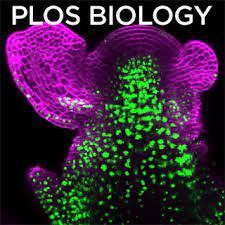PLoS Biol. 2023 Aug 8;21(8):e3002237. doi: 10.1371/journal.pbio.3002237
Lmo4 synergizes with Fezf2 to promote direct in vivo reprogramming of upper layer cortical neurons and cortical glia towards deep-layer neuron identities
Torsten Felske1, Chiara Tocco1, Sophie Péron2,3, Kawssar Harb1, Christian Alfano1, Chiara Galante2, Benedikt Berninger2,3,4,5, Michèle Studer1
Affiliations
1Université Côte d’Azur, CNRS, Inserm, iBV, Nice, France.
2Research Group “Adult Neurogenesis and Cellular Reprogramming”, Institute of Physiological Chemistry, University Medical Center Johannes Gutenberg University, Mainz, Germany.
3Centre for Developmental Neurobiology, Institute of Psychiatry, Psychology & Neuroscience, King’s College London, London, United Kingdom.
4MRC Centre for Neurodevelopmental Disorders, Institute of Psychiatry, Psychology & Neuroscience, King’s College London, London, United Kingdom.
5Focus Program Translational Neuroscience, Johannes Gutenberg University, Mainz, Germany.
Abstract
In vivo direct neuronal reprogramming relies on the implementation of an exogenous transcriptional program allowing to achieve conversion of a particular neuronal or glial cell type towards a new identity. The transcription factor (TF) Fezf2 is known for its role in neuronal subtype specification of deep-layer (DL) subcortical projection neurons. High ectopic Fezf2 expression in mice can convert both upper-layer (UL) and striatal projection neurons into a corticofugal fate, even if at low efficiency. In this study, we show that Fezf2 synergizes with the nuclear co-adaptor Lmo4 to further enhance reprogramming of UL cortical pyramidal neurons into DL corticofugal neurons, at both embryonic and early postnatal stages. Reprogrammed neurons express DL molecular markers and project toward subcerebral targets, including thalamus, cerebral peduncle (CP), and spinal cord (SC). We also show that co-expression of Fezf2 with the reprogramming factors Neurog2 and Bcl2 in early postnatal mouse glia promotes glia-to-neuron conversion with partial hallmarks of DL neurons and with Lmo4 promoting further morphological complexity. These data support a novel role for Lmo4 in synergizing with Fezf2 during direct lineage conversion in vivo.
DOI: 10.1371/journal.pbio.3002237

